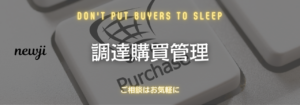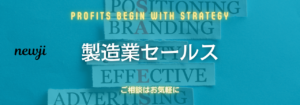- お役立ち記事
- Innovations in Japanese Manufacturing: Revolutionizing Industries with Electroactive Polymer Coating

Innovations in Japanese Manufacturing: Revolutionizing Industries with Electroactive Polymer Coating

目次
Introduction to Electroactive Polymer Coating in Japanese Manufacturing
Japanese manufacturing has long been synonymous with precision, quality, and innovation. Among the latest advancements is the development and application of electroactive polymer (EAP) coatings. These coatings are revolutionizing various industries by enhancing product performance, durability, and functionality. This article delves into the intricacies of EAP coatings, exploring their impact from a procurement and purchasing perspective, examining their advantages and disadvantages, and providing insights into supplier negotiation techniques, market conditions, and best practices.
Understanding Electroactive Polymer (EAP) Coatings
What are Electroactive Polymers?
Electroactive polymers are a class of materials that exhibit a change in size or shape when stimulated by an electric field. These polymers are lightweight, flexible, and can be engineered to respond to various stimuli, making them ideal for a wide range of applications, from robotics to biomedical devices.
Applications in Manufacturing
In Japanese manufacturing, EAP coatings are employed to enhance the properties of products across multiple sectors. For instance, in the automotive industry, EAP coatings improve the durability and responsiveness of electronic components. In electronics, they contribute to the development of more efficient and flexible devices. The versatility of EAP coatings allows manufacturers to innovate and stay competitive in a rapidly evolving market.
Advantages of Electroactive Polymer Coatings
Enhanced Performance and Durability
One of the primary advantages of EAP coatings is their ability to significantly enhance the performance and durability of products. These coatings provide superior resistance to wear and tear, extending the lifecycle of components and reducing the need for frequent replacements.
Energy Efficiency
EAP coatings contribute to energy efficiency by enabling the development of smarter, more responsive systems. In electronics, for example, these coatings can optimize energy consumption, leading to more sustainable and cost-effective products.
Flexibility and Customization
The inherent flexibility of electroactive polymers allows for extensive customization. Manufacturers can tailor the properties of EAP coatings to meet specific requirements, ensuring that products perform optimally under various conditions.
Lightweight Materials
EAP coatings are lightweight, which is advantageous in industries where weight is a critical factor, such as aerospace and automotive. Reducing the weight of components can lead to improved fuel efficiency and overall performance.
Challenges and Disadvantages
Cost Implications
Despite their numerous benefits, the implementation of EAP coatings can be cost-intensive. The initial investment in materials and technology may be high, which can be a barrier for some manufacturers, especially small to medium-sized enterprises.
Technical Expertise Required
Applying EAP coatings necessitates a high level of technical expertise. Manufacturers must invest in training and development to ensure that their workforce can effectively utilize and maintain these advanced coatings.
Market Acceptance
While EAP coatings offer significant advantages, market acceptance can be slow. Consumers and businesses may be hesitant to adopt new technologies without clear evidence of their long-term benefits and reliability.
Supply Chain Complexity
Integrating EAP coatings into manufacturing processes can complicate the supply chain. Coordinating with specialized suppliers and managing the logistics of new materials requires careful planning and coordination.
Procurement and Purchasing Perspectives
Identifying Reliable Suppliers
Procurement professionals must identify and collaborate with reliable suppliers who specialize in EAP coatings. This involves evaluating potential suppliers based on their technological capabilities, quality standards, and track record in delivering consistent and high-quality materials.
Cost-Benefit Analysis
Conducting a thorough cost-benefit analysis is crucial. Procurement teams need to assess the long-term benefits of implementing EAP coatings against the initial costs. This analysis should consider factors such as improved product performance, reduced maintenance costs, and potential market advantages.
Negotiation Strategies
Effective negotiation with suppliers can lead to better pricing, favorable payment terms, and customized solutions. Understanding the supplier’s cost structure, capacity, and flexibility allows procurement professionals to negotiate terms that align with their company’s financial and operational goals.
Quality Assurance
Ensuring the quality of EAP coatings is paramount. Procurement departments must establish stringent quality assurance protocols, including regular inspections, testing, and collaboration with suppliers to maintain high standards.
Supplier Negotiation Techniques
Building Strong Relationships
Establishing strong relationships with suppliers fosters trust and collaboration. Regular communication, transparency, and mutual respect are fundamental in building long-term partnerships that can adapt to changing market conditions and technological advancements.
Leveraging Volume Commitments
Committing to larger volumes can provide procurement teams with greater bargaining power. Suppliers are often willing to offer discounts or more favorable terms in exchange for guaranteed orders, which can lead to significant cost savings.
Exploring Long-Term Contracts
Long-term contracts can stabilize pricing, ensure supply continuity, and provide predictability for both parties. Negotiating extended agreements with suppliers can mitigate the risks of price volatility and supply disruptions.
Collaborative Innovation
Engaging suppliers in collaborative innovation initiatives can lead to the development of tailored EAP solutions. Joint research and development efforts can drive product enhancements and create unique value propositions in the market.
Market Conditions and Trends
Growing Demand for Smart Technologies
The increasing demand for smart and responsive technologies drives the adoption of EAP coatings. Industries such as automotive, electronics, and healthcare are actively seeking materials that can enhance the functionality and intelligence of their products.
Technological Advancements
Continuous advancements in polymer science and manufacturing processes are improving the performance and reducing the costs of EAP coatings. Staying abreast of these technological trends is essential for procurement professionals to make informed purchasing decisions.
Regulatory Environment
Regulatory standards governing the use of advanced materials like EAP coatings are evolving. Manufacturers must ensure compliance with international regulations, which can influence procurement strategies and supplier selection.
Global Supply Chain Dynamics
Global supply chain dynamics, including geopolitical factors and trade policies, impact the availability and pricing of EAP coatings. Procurement teams need to monitor these factors to navigate potential disruptions and leverage opportunities in the global market.
Best Practices in Procuring EAP Coatings
Comprehensive Supplier Evaluation
Implement a comprehensive supplier evaluation process that assesses technical capabilities, quality standards, financial stability, and reliability. This ensures that only reputable suppliers are engaged, minimizing risks associated with procurement.
Integrated Quality Management
Integrate quality management systems with suppliers to maintain consistent standards. This includes establishing mutual quality criteria, conducting joint audits, and implementing continuous improvement initiatives.
Strategic Sourcing
Adopt strategic sourcing practices that align procurement activities with overall business goals. This involves identifying key suppliers, diversifying the supplier base, and fostering innovation through collaborative partnerships.
Risk Management
Develop robust risk management strategies to address potential disruptions in the supply of EAP coatings. This includes identifying critical suppliers, creating contingency plans, and maintaining inventory buffers to mitigate supply chain disruptions.
Continuous Market Analysis
Engage in continuous market analysis to stay informed about industry trends, emerging technologies, and competitive dynamics. This knowledge enables procurement professionals to anticipate changes and adjust strategies proactively.
Case Studies: Success Stories in Japanese Manufacturing
Automotive Industry
A leading Japanese automotive manufacturer integrated EAP coatings into their electronic control units. This enhancement improved the responsiveness and durability of the systems, resulting in vehicles with better performance and reliability. The procurement team successfully negotiated long-term contracts with EAP suppliers, ensuring a steady supply of high-quality materials at competitive prices.
Consumer Electronics
A prominent consumer electronics company adopted EAP coatings to develop more flexible and energy-efficient devices. The procurement department collaborated with innovative Japanese suppliers to source advanced polymers, which contributed to the company’s market leadership and growth in the competitive electronics sector.
Aerospace Sector
In the aerospace industry, a Japanese manufacturer utilized EAP coatings to produce lightweight and resilient components for aircraft. The procurement team implemented strategic sourcing practices, aligning with suppliers that specialized in high-performance polymer materials. This collaboration enhanced the overall efficiency and performance of the aircraft, leading to significant cost savings and improved safety standards.
Future Outlook and Opportunities
Expanding Applications
The potential applications of EAP coatings are vast and continually expanding. Future innovations are likely to open new avenues in areas such as renewable energy, wearable technology, and advanced robotics, offering procurement professionals new opportunities to explore and invest in.
Sustainability Initiatives
As sustainability becomes increasingly important, EAP coatings can play a pivotal role in creating eco-friendly products. Manufacturers committed to reducing their environmental footprint can leverage these advanced materials to develop greener solutions, aligning with global sustainability goals.
Technological Integration
Integrating EAP coatings with emerging technologies such as the Internet of Things (IoT) and artificial intelligence (AI) can lead to the creation of smarter and more interconnected products. This integration presents exciting possibilities for innovation and competitive differentiation in the market.
Global Collaboration
Enhanced global collaboration between Japanese suppliers and international manufacturers can drive the development and adoption of EAP coatings. Cross-border partnerships can facilitate the exchange of knowledge, resources, and expertise, fostering a global ecosystem of innovation.
Conclusion
Electroactive polymer coatings represent a significant leap forward in Japanese manufacturing, offering enhanced performance, flexibility, and efficiency across various industries. From a procurement and purchasing perspective, leveraging EAP coatings involves navigating challenges related to cost, technical expertise, and supply chain complexity. However, the advantages far outweigh the disadvantages, providing substantial benefits in terms of product quality, energy efficiency, and market competitiveness.
By adopting best practices in supplier evaluation, strategic sourcing, and risk management, procurement professionals can effectively integrate EAP coatings into their manufacturing processes. As the market continues to evolve, staying informed about technological advancements and market trends will be crucial in maximizing the potential of EAP coatings.
Japanese manufacturing’s commitment to innovation and quality ensures that electroactive polymer coatings will continue to play a pivotal role in revolutionizing industries worldwide. Embracing these advancements enables manufacturers to enhance their product offerings, achieve operational excellence, and maintain a competitive edge in an ever-changing global marketplace.
 資料ダウンロード
資料ダウンロード
QCD管理受発注クラウド「newji」は、受発注部門で必要なQCD管理全てを備えた、現場特化型兼クラウド型の今世紀最高の受発注管理システムとなります。
 NEWJI DX
NEWJI DX
製造業に特化したデジタルトランスフォーメーション(DX)の実現を目指す請負開発型のコンサルティングサービスです。AI、iPaaS、および先端の技術を駆使して、製造プロセスの効率化、業務効率化、チームワーク強化、コスト削減、品質向上を実現します。このサービスは、製造業の課題を深く理解し、それに対する最適なデジタルソリューションを提供することで、企業が持続的な成長とイノベーションを達成できるようサポートします。
 製造業ニュース解説
製造業ニュース解説
製造業、主に購買・調達部門にお勤めの方々に向けた情報を配信しております。
新任の方やベテランの方、管理職を対象とした幅広いコンテンツをご用意しております。
 お問い合わせ
お問い合わせ
コストダウンが利益に直結する術だと理解していても、なかなか前に進めることができない状況。そんな時は、newjiのコストダウン自動化機能で大きく利益貢献しよう!
(β版非公開)






